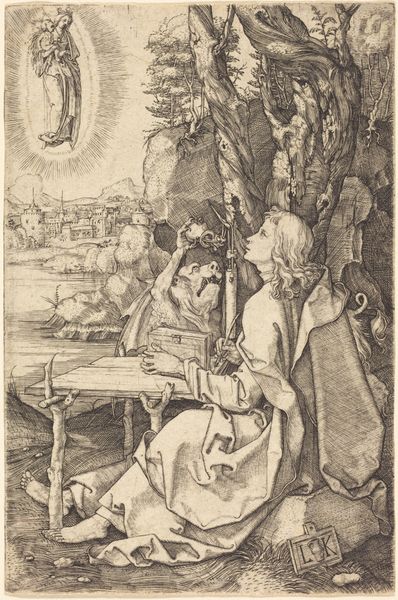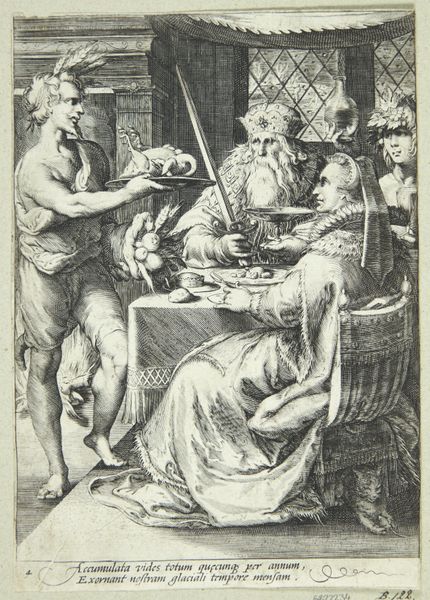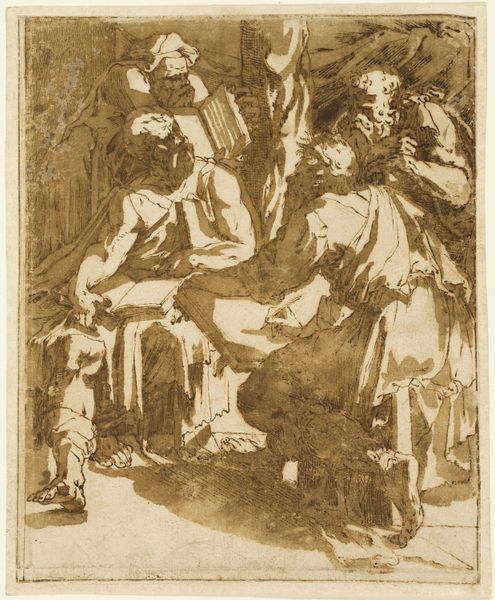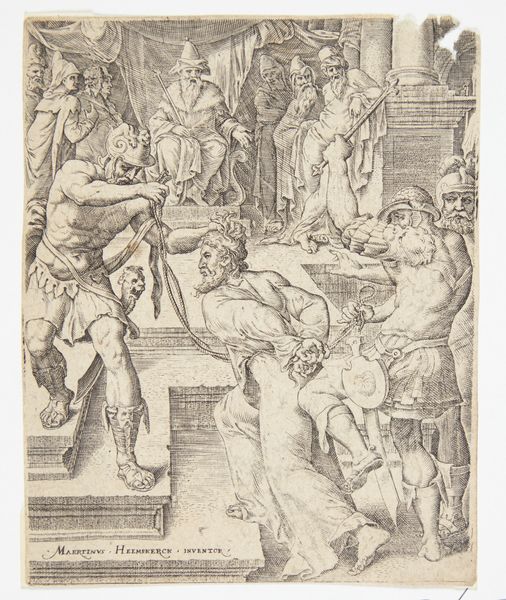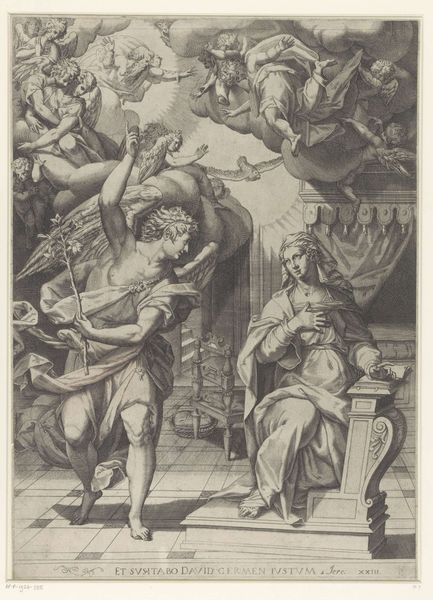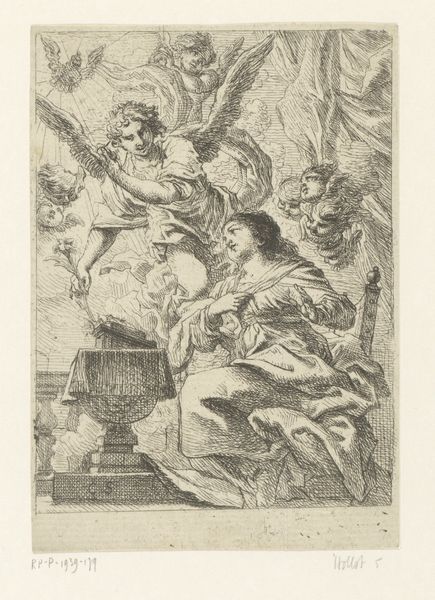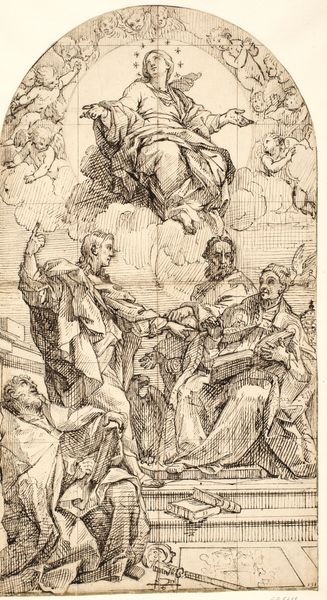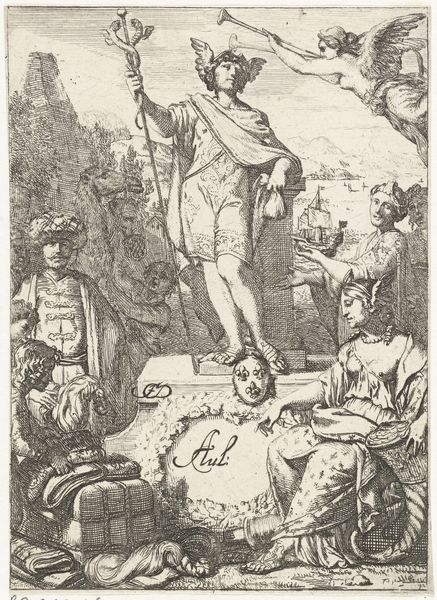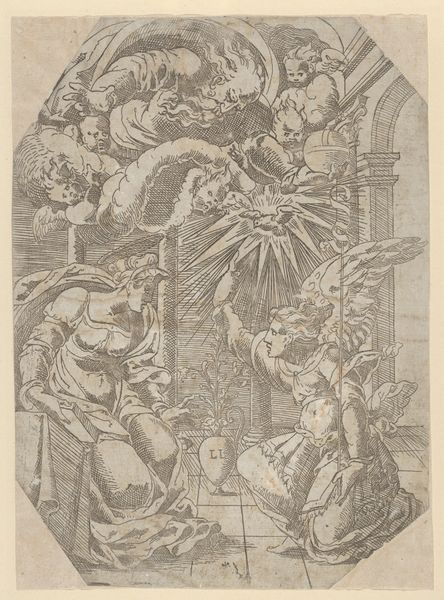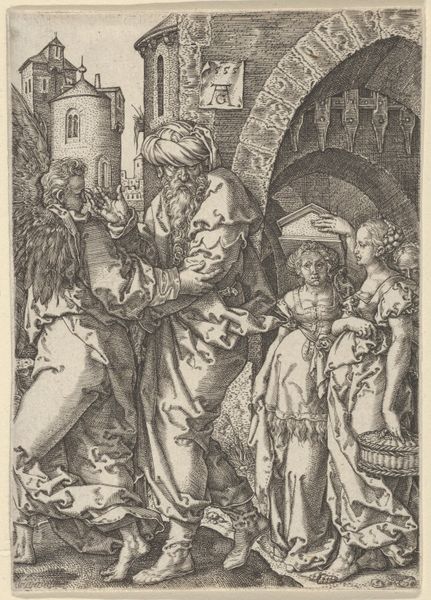
drawing, print, engraving
#
drawing
# print
#
landscape
#
figuration
#
11_renaissance
#
history-painting
#
engraving
Dimensions: Sheet: 5 15/16 in. × 4 in. (15.1 × 10.1 cm)
Copyright: Public Domain
Editor: This is Ludwig Krug's engraving, "St. John on Patmos," created sometime between 1503 and 1513. I'm really struck by the detailed linework in the landscape. What compositional elements stand out to you in this piece? Curator: Note the deliberate use of hatching and cross-hatching, a technique fundamental to printmaking, to define form and volume. Observe how light and shadow articulate St. John's robes and the natural forms of the trees and rocky outcrop. How would you describe the overall effect of this tonal range? Editor: It gives a real sense of depth, almost three-dimensional, despite being a monochrome print. But I’m wondering why the artist chose to combine landscape with figuration? Curator: The placement of St. John within the landscape isn't merely decorative; it establishes a direct relationship between the saint and the natural world. It emphasizes a visual rhetoric of scale, a deliberate contrast between the grandeur of nature and the figure of St. John. Do you find a connection between the Madonna and child above, and the textural forms below? Editor: I suppose it’s a visual bridge that joins the divine and earthly realms. I’m realizing now how the overall composition balances detailed textures with almost ethereal figures. Curator: Precisely. It's an interesting study in contrasts achieved through strictly formal means. The arrangement of forms and the use of light aren't just representational, but actively constructing meaning through visual language. A careful study reveals this wasn't a snapshot in time, but a highly calculated arrangement. Editor: It’s amazing how much can be gleaned by simply looking closely at the artistic techniques employed. I’ll be sure to pay closer attention to that in future encounters with prints.
Comments
No comments
Be the first to comment and join the conversation on the ultimate creative platform.
